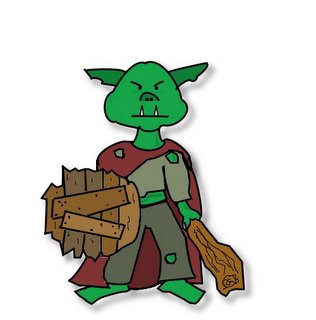Well, in an effort to get back to doing some actual development and quit monkeying around with Paintshop so much, I've laid out some simple goals so that I don't overextend myself creating oodles of art and not doing any actual development.
1. Create animations for the main character,
This will consist of 2 different sets of animation, approximately 5 frames each.
a. Walking left to right
b. Attacking
2. Create the Level 1 background.
I had this finished at one point, but I created it in basic paint so the quality was definitely not there. So I plan on recreating this using Paint Shop pro (and take advantage of its WONDERFUL WONDERFUL layers!!!)
So I have approximately, 11 graphics to create. Then, once those graphics are done, I have the following plans.
3. Have the game start with loading the background without the character and displaying the "Level 1 (press any key to start)" text in black (using DrawText I'm guessing)
4. After user presses key, make a game start sound and draw the character on the screen.
5. Begin playing a background track (most likely a free one from the web for now)
6. User can walk to the right (and back up by moving left)
7. Allow the user to walk and begin scrolling the background when appropriate.
8. Display "Success!" once the user has walked to the end and off the level.
With these plans, I'm hoping to limit the amount of time spent creating character animations (later I'll want to add Jump, Take Damage, Duck, etc) so that I can get back to actually doing some more Managed DirectX development.
I'll post some character shots after I get them done as well so you can see when I'm moving from the initial graphic stage into tackling some new development.
I'm really looking forward to doing the music and text pieces as well since I haven't actually coded anything for those pieces yet in Managed DirectX.
Then once, I get that level 1 initial round of coding done, I'll try and post some more complete examples of how my classes and code actually work.


